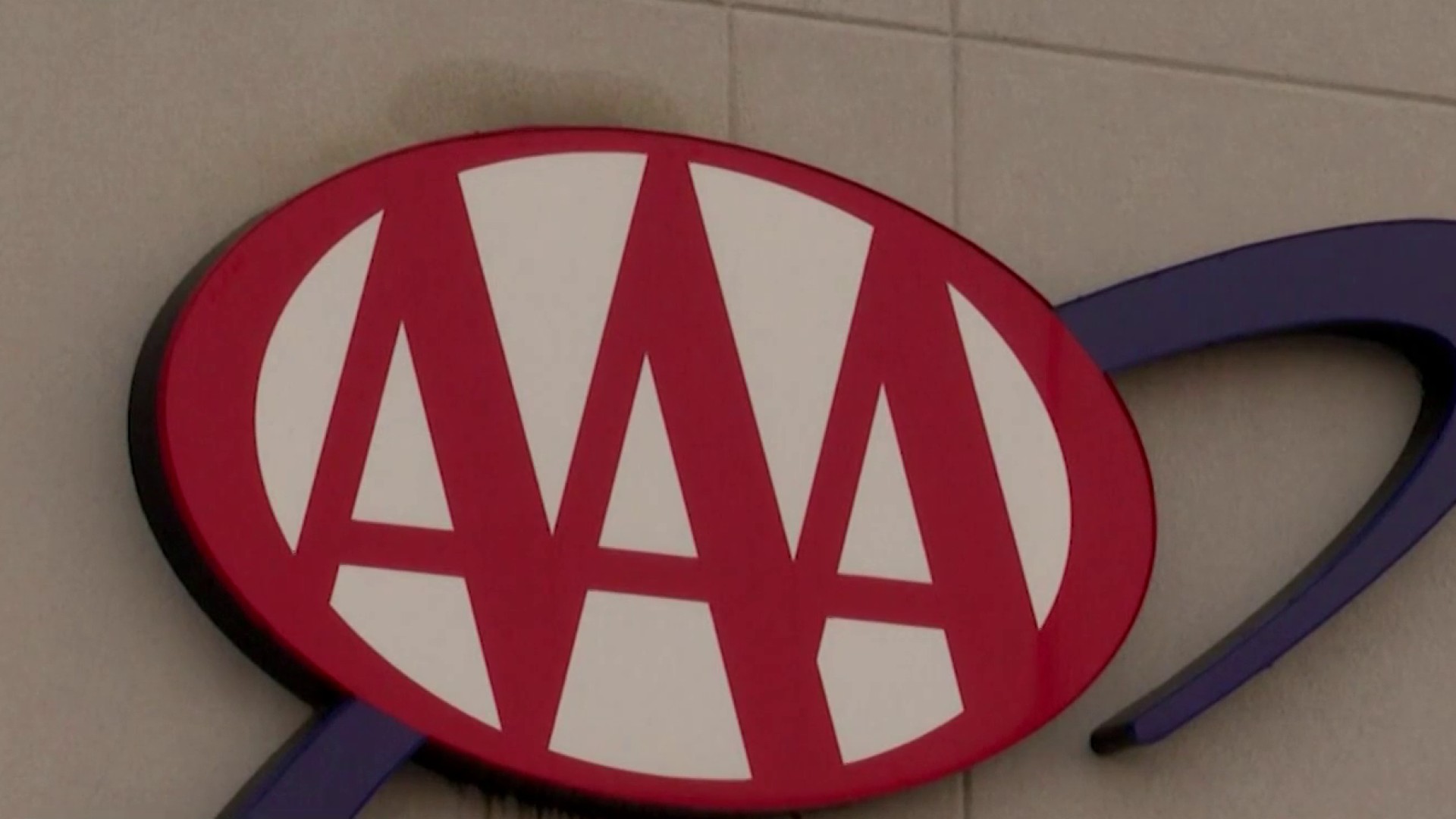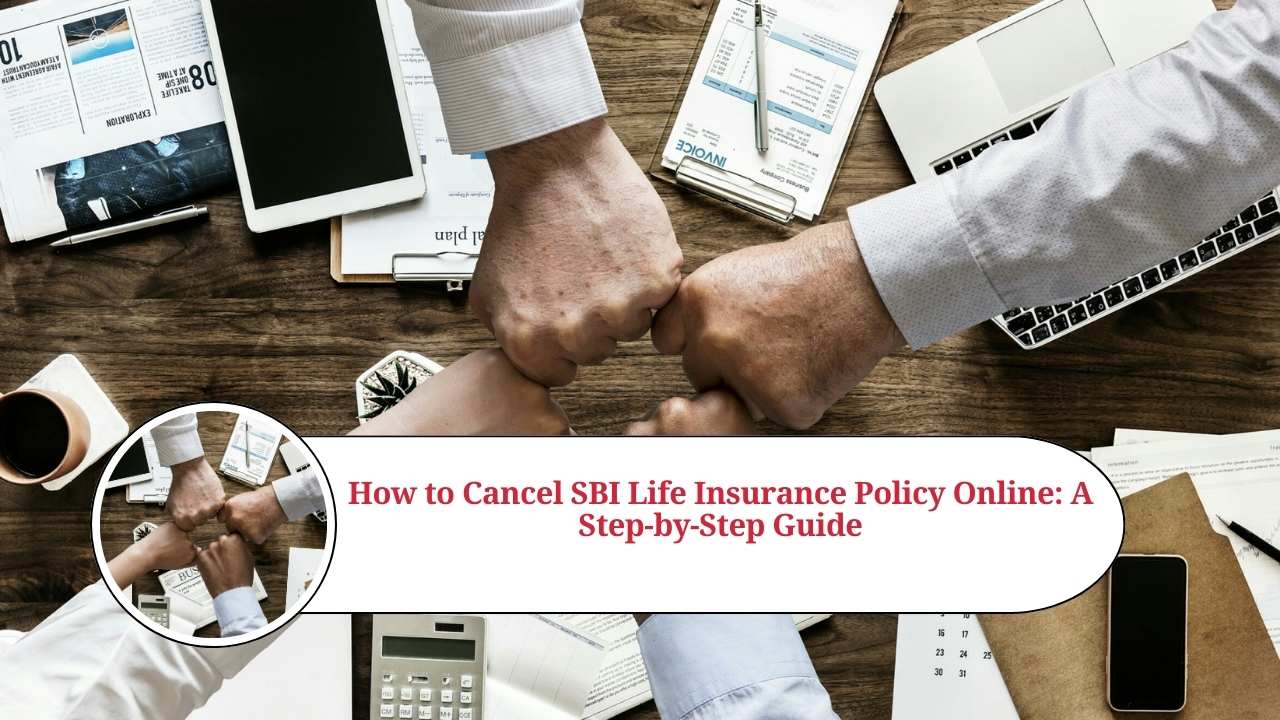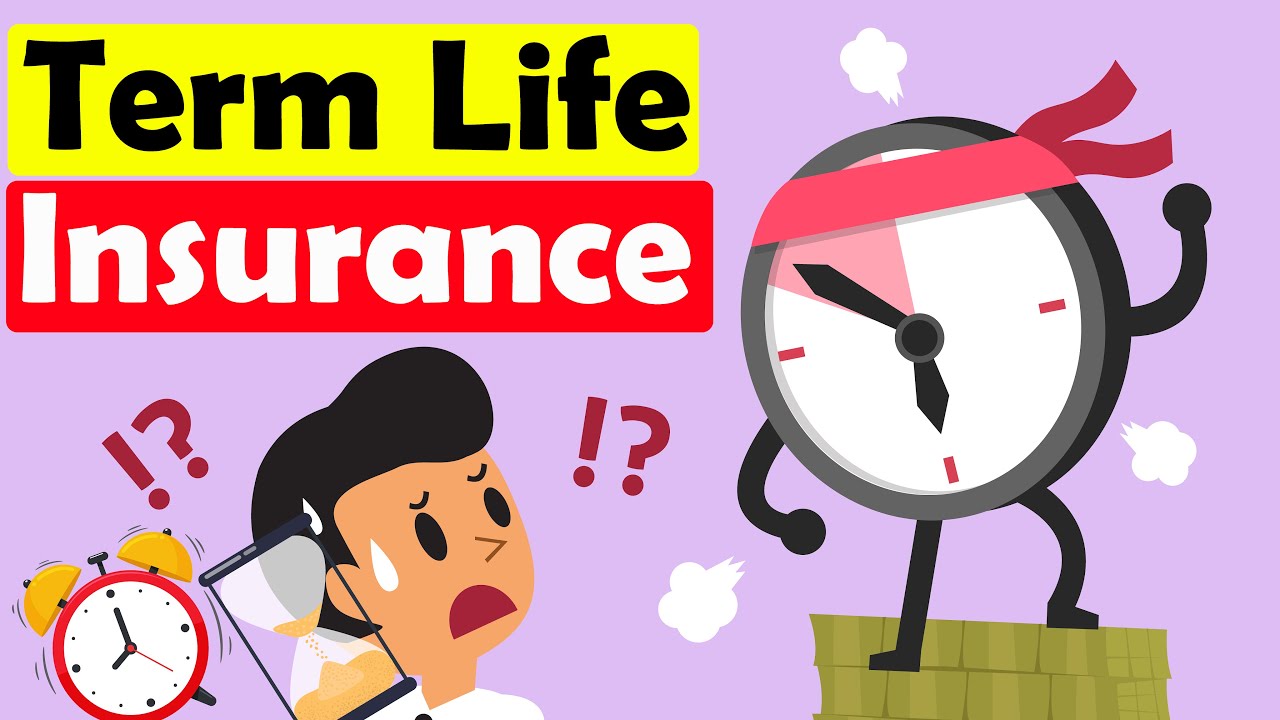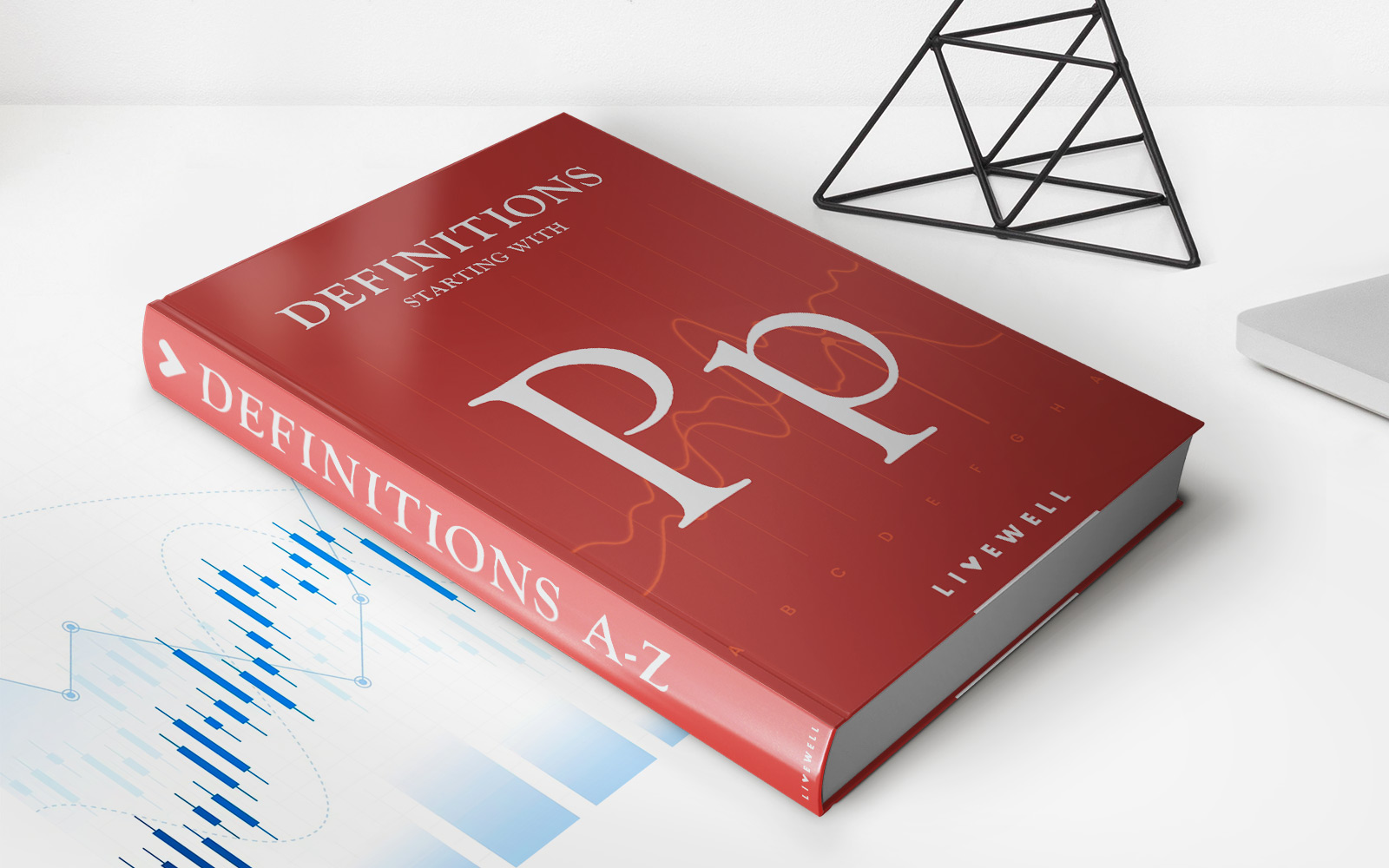

Finance
How To Cancel A Life Insurance Policy
Published: November 17, 2023
Learn how to cancel your life insurance policy and manage your finances effectively. Explore step-by-step guidance and find expert advice to make informed decisions, all on [Website Name].
(Many of the links in this article redirect to a specific reviewed product. Your purchase of these products through affiliate links helps to generate commission for LiveWell, at no extra cost. Learn more)
Table of Contents
- Introduction
- Reasons for Cancelling a Life Insurance Policy
- Understanding the Cancellation Process
- Contacting the Insurance Provider
- Providing Necessary Information
- Submitting the Cancellation Request
- Confirming the Cancellation
- Potential Consequences of Cancelling a Life Insurance Policy
- Alternatives to Cancelling
- Conclusion
Introduction
Life insurance is an important financial tool that provides protection and peace of mind to policyholders and their loved ones. However, there may come a time when you need to cancel your life insurance policy. Whether it’s due to a change in financial circumstances, a shift in priorities, or simply finding a better insurance option, knowing how to effectively cancel your life insurance is essential.
In this article, we will explore the process of cancelling a life insurance policy and provide you with the necessary information to navigate this decision. We will also discuss the potential consequences of cancelling your policy and offer alternative options to consider.
It is important to note that cancelling a life insurance policy should not be taken lightly. Life insurance provides a financial safety net for your loved ones in the event of your death, and cancelling your policy means forfeiting that protection. Before making a final decision, it is crucial to carefully evaluate your situation and consider all available options.
Now, let’s dive into the reasons why someone might choose to cancel a life insurance policy.
Reasons for Cancelling a Life Insurance Policy
There are several reasons why an individual might consider cancelling their life insurance policy. Here are a few common scenarios:
- Change in Financial Circumstances: Financial situations can change unexpectedly, and you may find yourself struggling to afford the premiums for your life insurance policy. If you are facing financial difficulties and need to free up some funds, cancelling your life insurance policy may be a viable option.
- Policy No Longer Aligns with Your Needs: Over time, your priorities and financial goals may shift. The life insurance policy you originally purchased may no longer be suitable for your current circumstances. For example, if your children have grown up and become financially independent, you may not need as much coverage as before. In such cases, cancelling your policy and exploring other insurance options may make financial sense.
- Availability of Better Insurance Options: The insurance market is constantly evolving, and new policies with more attractive features may become available. If you come across a life insurance policy that offers better terms, coverage, or premiums, cancelling your current policy and switching to the new one may be a logical choice.
- Change in Personal Relationships: If you were previously married and had a life insurance policy to financially protect your spouse, but you have since divorced, you may no longer have a need for that specific policy. Alternatively, if your spouse has passed away, and you are the sole beneficiary, you may choose to cancel the policy to avoid unnecessary premiums.
- Improper Policy Sale: In some cases, individuals may have been misled or pressured into buying a life insurance policy that doesn’t align with their needs or coverage goals. If you believe you were sold a policy under false pretenses, cancelling it and seeking legal assistance may be necessary.
These are just a few examples of why someone may decide to cancel their life insurance policy. It is important to carefully evaluate your individual circumstances and assess the potential consequences before making a final decision.
Understanding the Cancellation Process
Cancelling a life insurance policy typically involves a series of steps and requires communication with your insurance provider. Here’s a breakdown of the general process:
- Contacting the Insurance Provider: The first step is to reach out to your insurance company to initiate the cancellation process. You can usually find the contact information on your policy documents or by visiting the company’s website. It’s recommended to contact them through a phone call or email to ensure a documented record of the cancellation request.
- Providing Necessary Information: When contacting your insurance provider, be prepared to provide specific details about your policy, such as the policy number, your full name, and any other identifying information they may require. This will help the company locate your policy in their records and ensure a smooth cancellation process.
- Submitting the Cancellation Request: Once you have initiated contact and provided the necessary information, you will need to formally request the cancellation of your life insurance policy. The insurance provider will guide you through the specific steps they require for cancellation, which may include submitting a written request or completing an online form.
- Confirming the Cancellation: After submitting your cancellation request, the insurance company will review it and confirm the cancellation of your life insurance policy. They may also provide you with written confirmation or a cancellation notice for your records. It is crucial to keep a copy of this confirmation for future reference.
The cancellation process may vary slightly depending on the insurance provider and the terms of your policy. Some policies may have specific cancellation clauses or require a minimum cancellation notice period. It’s important to review your policy documents or consult with a representative from the insurance company to ensure you follow the correct process.
Next, let’s explore some potential consequences of cancelling a life insurance policy.
Contacting the Insurance Provider
When it comes to cancelling a life insurance policy, one of the first steps is to contact your insurance provider. This step is crucial as it initiates the process and allows you to gather the necessary information and guidance to proceed with cancellation.
There are a few methods you can use to get in touch with your insurance provider:
- Phone Call: The most direct and efficient way to contact your insurance provider is by phone. Look for the customer service phone number provided on your policy documents or visit the company’s website for the appropriate contact information. When calling, be prepared to provide your policy number and any other identifying information to verify your identity.
- Email: Many insurance companies now provide customer support services through email. You can find the email address to reach out to on the insurer’s website. When sending an email, clearly state your intention to cancel the policy and include your policy number and any additional information they may require.
- Online Account or Customer Portal: Some insurance providers offer online account management or customer portals that allow policyholders to access their policy information and make changes. Check if your insurance company provides this option and log in to your account to start the cancellation process. If you don’t have an online account, you may need to create one or contact customer support for assistance.
When contacting your insurance provider, it’s important to communicate your intention to cancel your life insurance policy clearly. Ask for specific instructions on the cancellation process and any required documentation. The representative you speak with should be able to guide you through the necessary steps and address any questions or concerns you may have.
It’s a good practice to document your interactions with the insurance provider, including the date, time, name of the representative, and a summary of the conversation. This can serve as a reference point if any issues or disputes arise during the cancellation process.
Next, we’ll explore what information you’ll need to provide when cancelling your life insurance policy.
Providing Necessary Information
When cancelling a life insurance policy, it’s important to provide the insurance provider with all the necessary information to ensure a smooth and prompt cancellation process. Here are some key details that you may need to provide:
- Policy Details: You will typically need to provide your policy number, which can be found on your policy documents. This unique identifier helps the insurance company locate your policy in their records and verify your ownership.
- Personal Details: You will be required to provide your full name, address, contact information, and any other personal details specified by the insurance company. This information is necessary for identification and communication purposes.
- Identification: In some cases, the insurance provider may request additional identification documents to verify your identity. This may include a copy of your driver’s license, passport, or other government-issued identification.
- Reason for Cancellation: While not always required, some insurance companies may ask for the reason behind your decision to cancel the policy. They may use this information for internal purposes or to improve their products and services.
- Payment Details: If you have any outstanding premiums or pending payments, you may need to provide details on how you would like those handled. This could include requesting a refund for any pre-paid premiums or allowing the insurer to deduct any outstanding amounts from your account.
- Preferred Method of Communication: Let the insurance provider know your preferred method of communication for future correspondence, such as email or postal mail.
It’s important to accurately provide all the requested information to ensure a smooth cancellation process. Double-check the information you provide to avoid any errors or delays in processing your cancellation request.
Additionally, some insurance companies may have specific forms or documents that need to be completed and submitted for cancellation. They may provide these forms online, via email, or through traditional mail. Be sure to follow the instructions provided by your insurance company and complete any necessary paperwork accurately and thoroughly.
Once you have gathered and provided all the necessary information, you can proceed with submitting your cancellation request. In the next section, we will discuss the steps involved in submitting the cancellation request.
Submitting the Cancellation Request
After contacting your insurance provider and providing the necessary information, the next step in cancelling your life insurance policy is to submit the cancellation request. This step finalizes the process and formally notifies the insurance company of your decision to terminate the policy. The specific steps for submitting a cancellation request may vary depending on the insurance provider, but here are some general guidelines to follow:
- Follow the Insurance Provider’s Instructions: The insurance company will provide you with instructions on how to submit your cancellation request. It could be in the form of completing a specific cancellation form, sending a written letter, or submitting an online form through their website. Carefully read and understand the instructions provided to ensure you submit the cancellation request correctly.
- Complete the Cancellation Form: If the insurance company requires a specific cancellation form, make sure to complete it accurately and thoroughly. Provide all the requested information, including your policy details, personal information, and any additional questions or sections specified. Take the time to review your answers before submitting the form to avoid any errors or omissions.
- Write a Cancellation Letter (if necessary): In some cases, the insurance provider may request a written letter stating your intent to cancel the life insurance policy. If this is the required method, draft a concise and clear letter that includes your policy number, full name, contact information, and a clear statement of your decision to cancel the policy. Sign and date the letter, and consider sending it via certified mail to ensure proof of delivery.
- Submit Online Forms: If the insurance provider offers an online form for policy cancellation, navigate to their website and locate the specific form. Fill in all the required fields accurately and review your entries before hitting the submit button. Keep a copy of the confirmation page or any reference number provided to track your cancellation request.
It’s important to follow the insurance provider’s instructions precisely to ensure your cancellation request is processed correctly and efficiently. If you have any questions or concerns during the submission process, contact the insurance company’s customer service for clarification or guidance.
Once you have submitted your cancellation request, the insurance provider will review it and proceed with processing the cancellation. In the next section, we will discuss the importance of confirming the cancellation.
Confirming the Cancellation
After you have submitted your cancellation request for your life insurance policy, it is crucial to obtain confirmation from the insurance company to ensure that the cancellation has been processed successfully. Confirming the cancellation provides you with peace of mind and serves as evidence that you are no longer obligated to pay premiums or receive coverage.
The following steps can help you confirm the cancellation of your life insurance policy:
- Wait for Communication: The insurance provider will typically communicate with you regarding the status of your cancellation request. This may involve sending a confirmation letter, email, or online notification. Be patient and allow the insurance company some time to process your request and provide the necessary confirmation.
- Review Confirmation Documentation: Once you receive the confirmation communication from the insurance provider, carefully review the contents. Ensure that the letter or email clearly states that the cancellation has been processed and the effective date of the cancellation. Verify that the policy number mentioned in the confirmation matches your policy details.
- Contact the Insurance Provider (if necessary): If you do not receive confirmation within a reasonable timeframe or if there are any discrepancies in the confirmation documentation, contact the insurance provider’s customer service. Inquire about the status of your cancellation and ask for clarification or additional information as needed.
- Keep Records: Once you have the confirmation of cancellation, it is essential to keep a copy for your records. This can serve as proof that you have successfully terminated the life insurance policy, should any issues arise in the future.
Obtaining confirmation of the cancellation is crucial because it ensures the proper termination of your life insurance policy. It also provides you with the necessary documentation in case of any disputes or issues with the insurance provider or future inquiries regarding your policy status.
Remember, cancelling a life insurance policy is a significant decision, and it’s important to weigh the potential consequences before proceeding. In the next section, we will discuss some of the potential consequences of cancelling a life insurance policy.
Potential Consequences of Cancelling a Life Insurance Policy
Before making the final decision to cancel your life insurance policy, it is important to consider the potential consequences that may arise from cancelling. Here are a few factors to keep in mind:
- Loss of Coverage: The most obvious consequence of cancelling a life insurance policy is the loss of coverage. By terminating your policy, you no longer have the financial protection it provides in the event of your death. This can leave your loved ones vulnerable and without the financial support they would have received from the life insurance payout.
- Difficulty Obtaining New Coverage: If you decide to cancel your current policy and later want to purchase a new life insurance policy, you may encounter difficulties. Life insurance premiums are typically based on factors such as age, health, and lifestyle. If your circumstances change or your health declines, you may face higher premiums or even be denied coverage when applying for a new policy. It is crucial to carefully consider whether the benefits of cancelling outweigh the potential challenges of obtaining new coverage in the future.
- Loss of Cash Value (in some policies): If you have a permanent life insurance policy with a cash value component, cancelling the policy means forfeiting any accumulated cash value. Cash value is a portion of the premiums that builds up over time and can be accessed or borrowed against. Cancelling the policy means losing access to this cash value and potentially the potential growth it may have achieved.
- Impact on Estate Planning: Life insurance policies are often used as part of estate planning to provide funds for beneficiaries, pay off debts, or cover estate taxes. Cancelling a policy can disrupt the intended distribution of assets after your passing and may require alternative planning strategies.
- Loss of Premiums Paid: If you have paid premiums in advance for your life insurance policy, cancelling the policy means losing those payments. Depending on the terms of your policy and the cancellation process, you may not be entitled to a refund of the premiums you have already paid.
It is essential to carefully evaluate your individual circumstances and weigh the potential consequences before cancelling your life insurance policy. Consider discussing your decision with a financial advisor or insurance professional who can provide personalized guidance based on your specific needs and goals.
While cancelling a life insurance policy may be a viable option in certain situations, it is important to explore alternative solutions before making a final decision. The next section will delve into some alternatives to cancelling a life insurance policy.
Alternatives to Cancelling
Before finalizing the decision to cancel your life insurance policy, it is worth exploring alternatives that may better suit your needs or address the reasons behind your contemplation of cancellation. Here are a few alternatives to consider:
- Review and Adjust Coverage: Instead of cancelling the entire policy, you can review your coverage and make adjustments to better align with your current circumstances. This may involve reducing the death benefit, changing the policy type, or modifying the term or duration of the policy. By making changes to your existing policy, you can potentially lower your premiums while still maintaining some level of coverage.
- Explore Policy Riders: Policy riders are additional provisions that can be added to your existing life insurance policy to enhance its benefits or add supplemental coverage. Riders can provide options such as accelerated death benefit, additional coverage for specific conditions, or a waiver of premium in case of disability. By adding riders, you can customize your policy to better meet your needs without the need for cancellation.
- Consider Policy Conversion: If you have a term life insurance policy and are thinking of cancelling it, consider exploring the option of converting it into a permanent life insurance policy. Policy conversion allows you to convert your term policy into a whole life or universal life policy without the need to undergo additional underwriting or provide evidence of insurability.
- Shop for Better Policies: If your primary reason for cancellation is to find a better life insurance policy, take the time to research and shop for alternative policies. Compare quotes, coverage options, and policy terms from different insurance providers to ensure you are getting the best possible coverage at an affordable price.
- Seek Professional Advice: Consulting with a financial advisor or insurance professional can provide valuable insights and guidance to help you navigate the decision-making process. They can assess your unique circumstances, evaluate your insurance needs, and recommend the most suitable solutions or alternatives considering your financial goals.
Exploring these alternatives can help you find a solution that addresses your concerns and provides you with the necessary coverage without the need for cancellation. Keep in mind that each alternative has its own considerations and potential implications, so it is important to carefully evaluate the options and consult with a qualified professional if needed.
Before concluding, take some time to reflect on your personal circumstances and weigh the pros and cons of each alternative. In the next section, we will summarize the main points discussed in this article.
Conclusion
Cancelling a life insurance policy is a significant decision that should not be taken lightly. It is crucial to carefully evaluate your circumstances, consider the potential consequences, and explore alternatives before proceeding with cancellation.
In this article, we discussed the process of cancelling a life insurance policy, including the steps of contacting the insurance provider, providing necessary information, submitting the cancellation request, and confirming the cancellation. We also explored common reasons for cancelling, such as a change in financial circumstances or finding a better insurance option.
However, cancelling a life insurance policy can have consequences, such as the loss of coverage, potential challenges in obtaining new coverage in the future, and the forfeiture of any cash value or premiums already paid. It is important to weigh these potential consequences carefully and consider alternatives before making a final decision.
Some alternatives to cancelling include adjusting your coverage, exploring policy riders, considering policy conversion, shopping for better policies, and seeking professional advice. These alternatives can provide you with options to better align your life insurance coverage with your current needs and goals.
Remember, every individual’s situation is unique, and it is essential to make decisions based on your specific circumstances and financial goals. If you are unsure about whether to cancel your life insurance policy, it is advisable to consult with a financial advisor or insurance professional who can provide personalized guidance.
Ultimately, the decision to cancel or retain a life insurance policy should be based on thorough evaluation, careful consideration, and a clear understanding of the potential implications.














